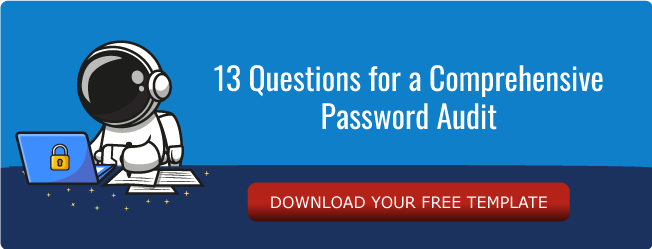Authentication and Session Management are critical components of online data security that help protect personal and confidential information. Authentication is about verifying the identity of a user (or system) by confirming their credentials, while Session Management is about protecting a user's data during the period of time when a user is actively engaged with a system or website. Lastly, we can not really talk about Authentication without also discussing Authorisation, which is concerned with what a user can do once they have been authenticated.
Authentication, Authorisation and Session Management are used as components to secure the vast amount of sensitive data being stored and transmitted online, as ensuring that data is protected has become more important than ever before.
This post focuses on how these components work, why they matter for data security and what businesses (and individuals) need to understand and do in order to ensure robust data security.
|
Included in this post: |
What is the difference between Authorisation, Authentication, a Session and Session Management?
Imagine you’re going to the gym.
 Authentication
Authentication
Getting into the gym requires a membership card. This is your Authentication. Your proof that you are who you say you are. The card is like your username and password for logging into a website. Once you show your card, you're granted access to the gym, just like how authentication grants you access to a website or piece of software.
Authorisation
After confirming your identity, it's essential to determine what rights and permissions you have, which dictate the actions you can take. For instance, even if you have an account at a gym, you may not be allowed to enter if your membership is inactive. Additionally, if the gym has a tiered membership system, you might have access to some parts of the facility but not others, based on your membership level. Thus, it's critical to distinguish between authentication, which verifies your identity, and authorisation, which determines your level of access.
Session
Now, once you're inside the gym, your Session becomes active. This Session lasts until you swipe out of the gym - or when you log out of the website. While your Session is active you can access the various features and functionality of the gym like the weights section or the pool, or whatever service the website is offering.
Session Management
Session Management involves not only securing your session but also keeping track of it. This information can be used for various business purposes, such as identifying high traffic times. In the gym example, Session Management and tracking can be useful in an incentive program where members are required to attend the gym a certain number of times per month. The session data can track their attendance and detect any unusual activities, such as short periods of entry and exit, which may indicate that somebody is trying to manipulate the system.
It can also be valuable for security purposes, such as accounting for everyone's safety during an emergency like a fire. In a web application this could be accounting for all affected parties in the case of a data breach. Or in the gym, a fire was caused intentionally, session data could be used to identify who was in the gym at the time and aid with investigation.
Session Management and Authentication work together to make sure that your website experience is secure and that you have access to the features and information that you need. It's just like how a gym ensures that only members have access to its facilities and that they and their belongings are kept safe while they work out.
Benefits of having strong Authentication and Session Management
Before we look at how strong Session Management and Authentication practices can be implemented, it would be useful to first ask ourselves why we should bother with it and why we should take it seriously.
- Protection against unauthorised access. You are ensuring that only authorised users are granted access to sensitive data and resources. This helps prevent unauthorised access and reduces the risk of data breaches.
- Increased accountability. You are able to track user activity and hold users accountable for their actions on your website. This can help deter malicious activity and ensure that users are held responsible for any damage they may cause.
- Improved user experience. By allowing users to resume their activity where they left off, you can make it easier for them to navigate your website and complete tasks without having to start over.
- Reduced risk of data loss. By storing session data securely and setting reasonable session timeouts, you can ensure that user data is protected and that sessions are terminated in a timely manner to prevent unauthorised access.
Overall, Authentication and Session Management play a crucial role in web development when it comes to maintaining good security and user experience. So how can we implement them effectively?
What does strong Session Management look like?
We have taken a look at the benefits of Session Management, however, the convenience that sessions provide comes with some security concerns. Hackers can exploit vulnerabilities in Session Management techniques to gain unauthorised access.
To avoid such scenarios, it is crucial to implement secure techniques and follow best practices for Session Management. Some of these best practices are:
1. Only send information through secure channels
Let's say you're sending information to a website. If the website is not secure, it's like sending a postcard through the mail instead of sending a letter inside an envelope. Anyone who sees the postcard can read what's on it, and even change what's written on it. But if you use an envelope, your message is protected and only the person who's supposed to see it can read it.
The same thing happens with information on the internet. If a website is not secure and the data is not encrypted, anyone who's snooping on the internet can read and even change the information that is sent between you and the website.
2. Session Rotation
Your session is like your ticket that a website gives you when you log in, which proves that you are who you say you are. But if someone steals your ticket, they can pretend to be you and get into your account. Rotating the sessions reduces the damage that an attacker can do by limiting the time that the hijacked session is valid.
Websites can rotate the sessions by generating new tickets at regular intervals or after certain events like changing your password. This makes it harder for an attacker to use a stolen ticket to get into your account.
3. Session ID Generation
Since the session keeps track of personal and private information, it is important to make sure that nobody else can guess or figure out your session credentials, it's important that it's hard to guess and that it remains completely random.
4. Session Expiration
To be even safer, session tokens should only last for a limited time. That way, if someone tries to steal your session token, it will be useless after a certain amount of time, and they won't be able to use it to access your account or data. This helps prevent tricks and hacks that might try to take advantage of the session credentials to get access to your information. It is also important to allow for the user to destroy the session by means of a logout button.
The amount of time that the session should last depends on the application. Very short timeouts are great for applications where security is the primary concern, such as banking apps. Longer timeouts are preferable for applications where the risk is lower and the primary concern is user experience.
5. Session validation
Since the session is used for important things, such as Authorisation, it needs to be verified often. Sessions should be validated with every interaction the user's web browser has with the web server.
Secure Session Management is crucial to protect web applications and websites from unauthorised access. By following the best practices for session management, you can prevent session management hacking and ensure that user data and accounts are kept secure.
What does strong Authentication look like?
Session management best practices primarily focus on measures that a company can take to safeguard user data, whereas Authentication is centred around urging users to opt for more secure means of identifying themselves, including:
- Having strong and unique passwords. Passwords are like the keys to your online life. Just like you wouldn't want to give out your house key to just anyone, you also don't want to use weak passwords that can be easily guessed by hackers. That's why it's important to encourage users to create strong and unique passwords that include a mix of upper and lowercase letters, numbers, and symbols. And to make sure each account has its own unique key, it's best to avoid using the same password for multiple accounts.
- Using two-factor authentication. Two-factor authentication is like having a secret handshake in addition to a password. It adds an extra layer of security to make sure that only authorised people can access sensitive data. By requiring users to provide a second form of authentication, such as a code sent to their mobile phone, it makes it much harder for cybercriminals to access your accounts, even if they somehow manage to steal your password.
Some general Data Security best practices
While good Authentication and Session Management practices are very important, it is essential to remember that they, alone, are not enough to maintain data security and protect the privacy of users.
Here are some more general best practices:
- Regularly update software and security systems. This ensures that you have the latest security patches and protection against known vulnerabilities.
- Provide regular security training. This empowers your team with the knowledge and understanding that they need to identify and prevent potential security threats.
- Use encryption. Encryption is like a secret code that only the intended recipient can decode. This ensures that even if someone intercepts the data, they won't be able to read it. Encryption can be used for data in transit (when it's being sent between devices) and data at rest (when it's stored on a server or in the cloud). This way, even if someone gains access to the data, they won't be able to read it without the proper decryption key.
- Monitor user activity. Monitoring user activity is an essential practice to keep your website and network secure. By regularly monitoring login attempts, session activity, and user activity, you can detect potential security threats or unusual activity that could indicate a breach.
Read here for more tips on how to reduce business data risk & increase data security & compliance.
Conclusion
Data security is a significant concern for both individuals and businesses, and safeguarding against unauthorised access and data breaches requires good Authentication and Session Management practices. However, it is important to remember
that this alone is not enough to protect data and ensure privacy. By using strong and unique passwords, implementing two-factor authentication, users can protect their data further.
Businesses should keep software and security systems up-to-date, providing regular security training, and monitoring user activity can also help reduce the risk of security threats.









Comment